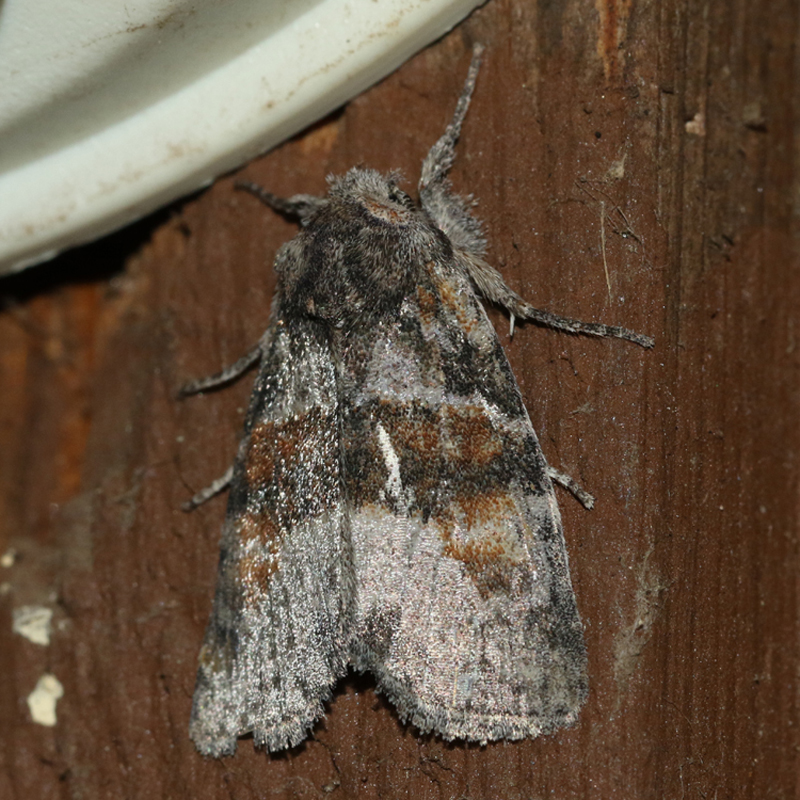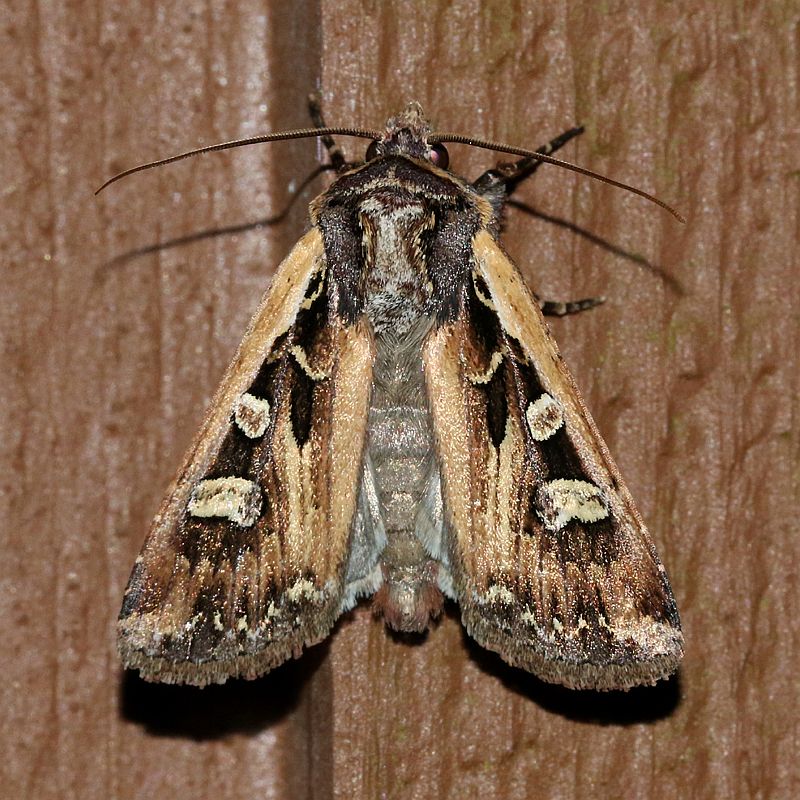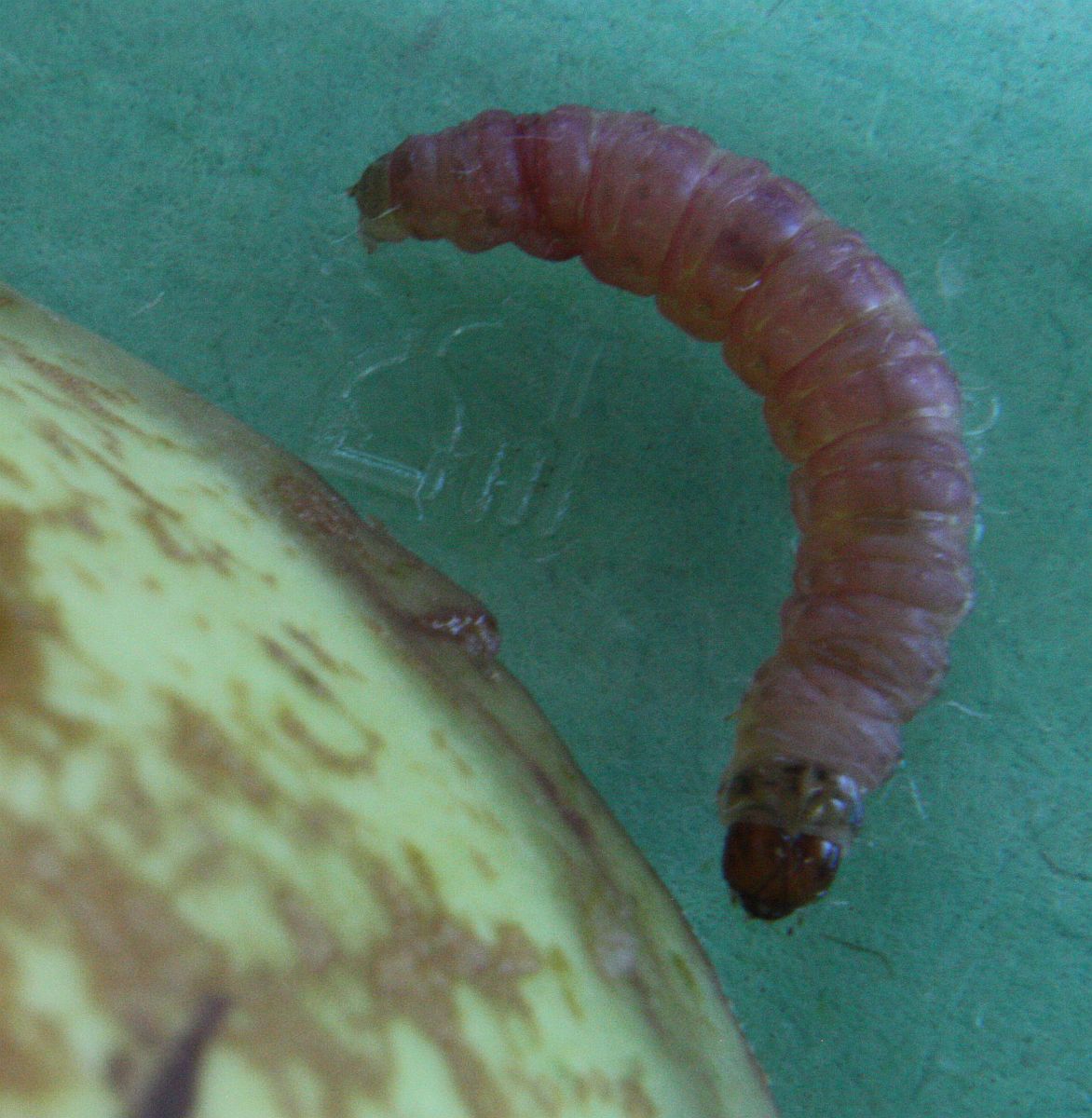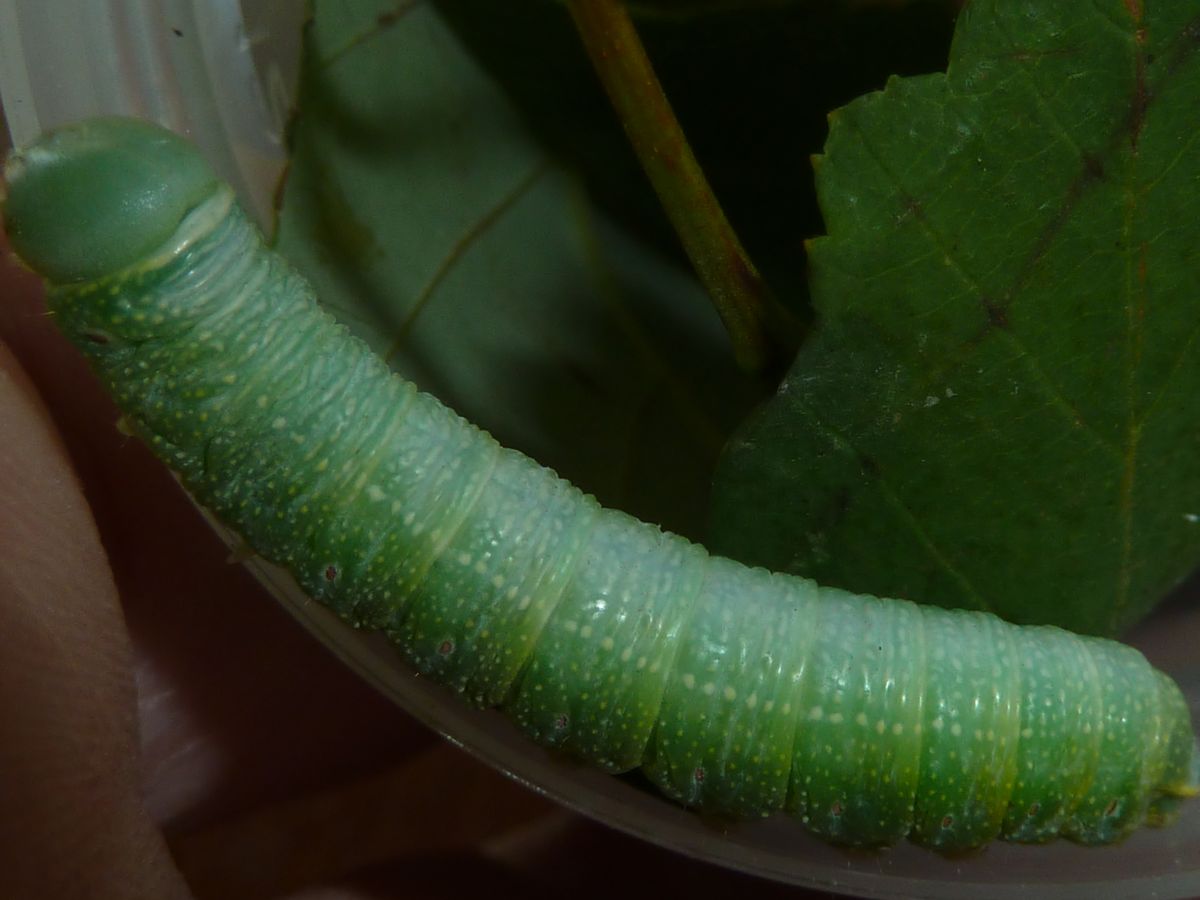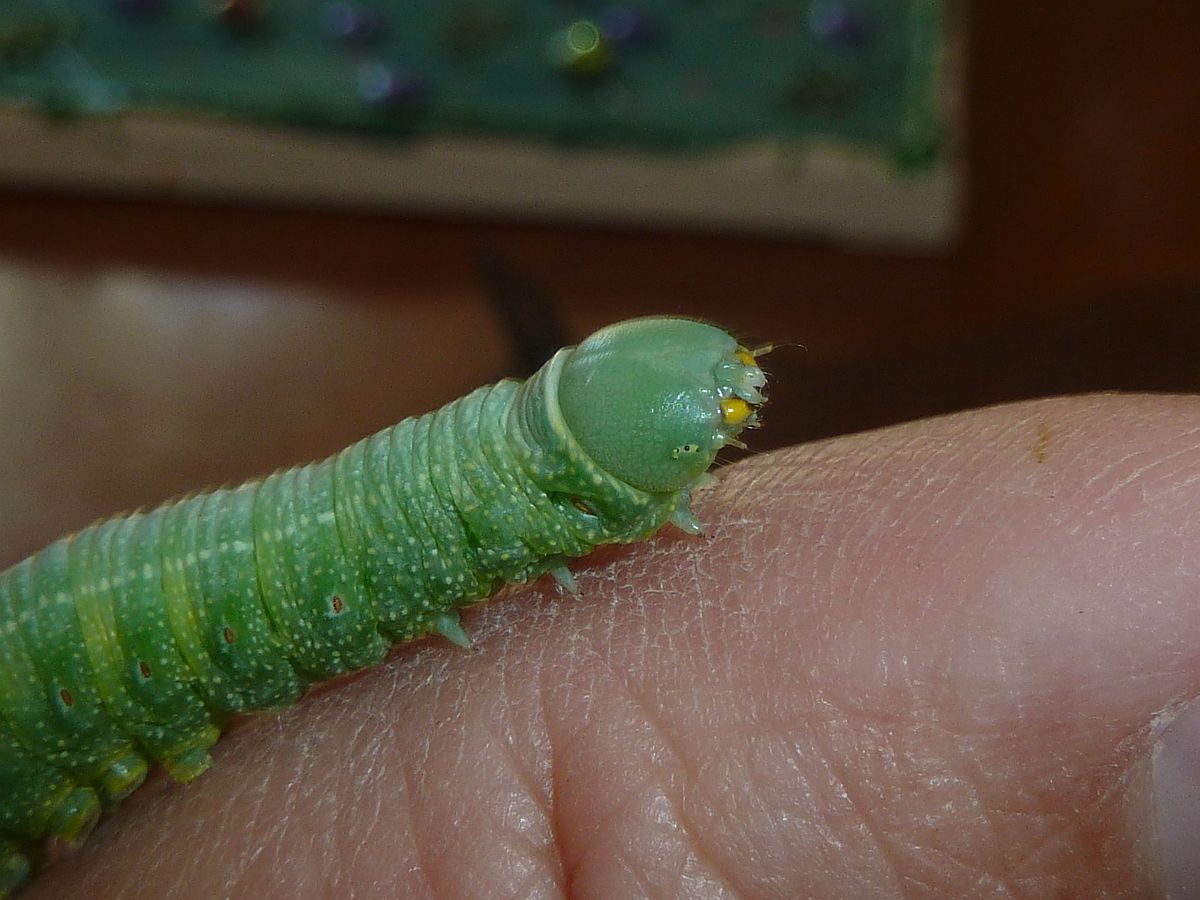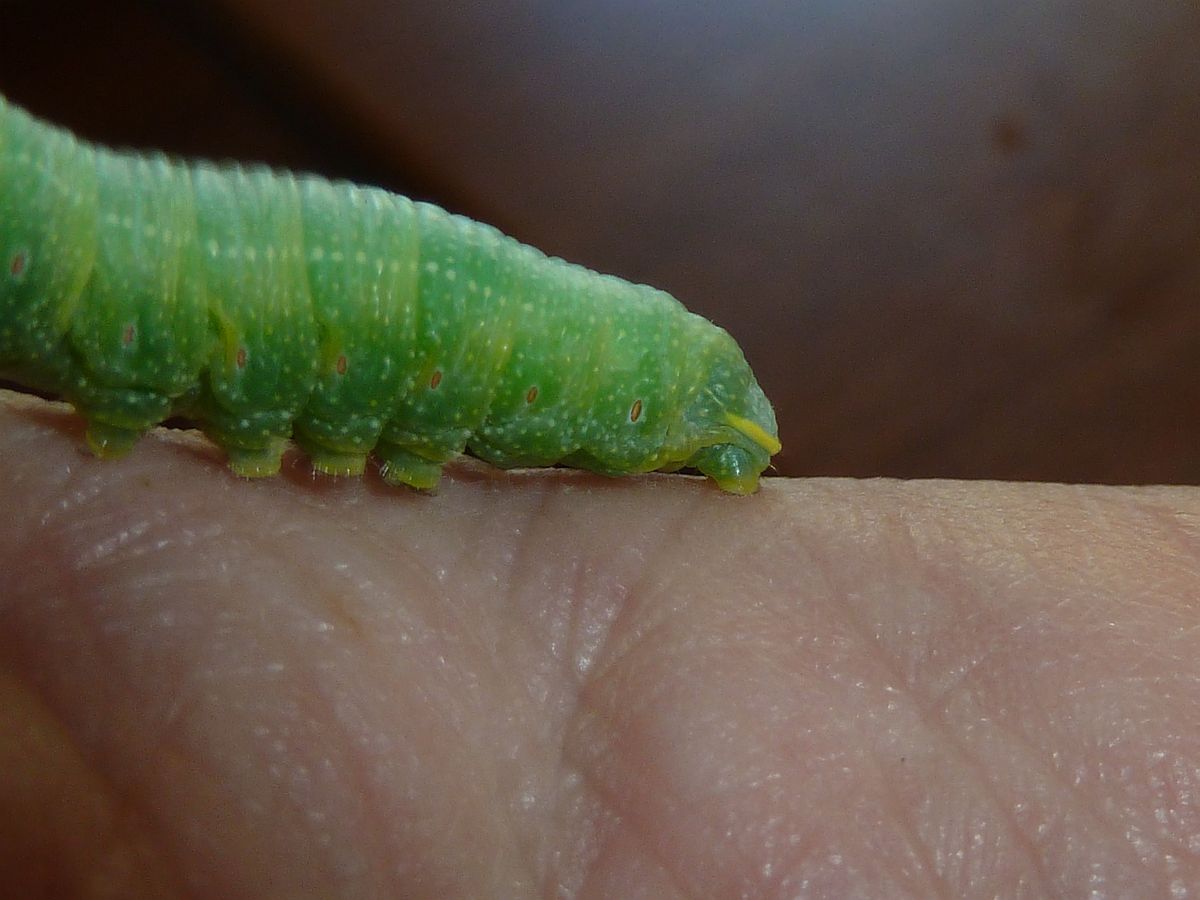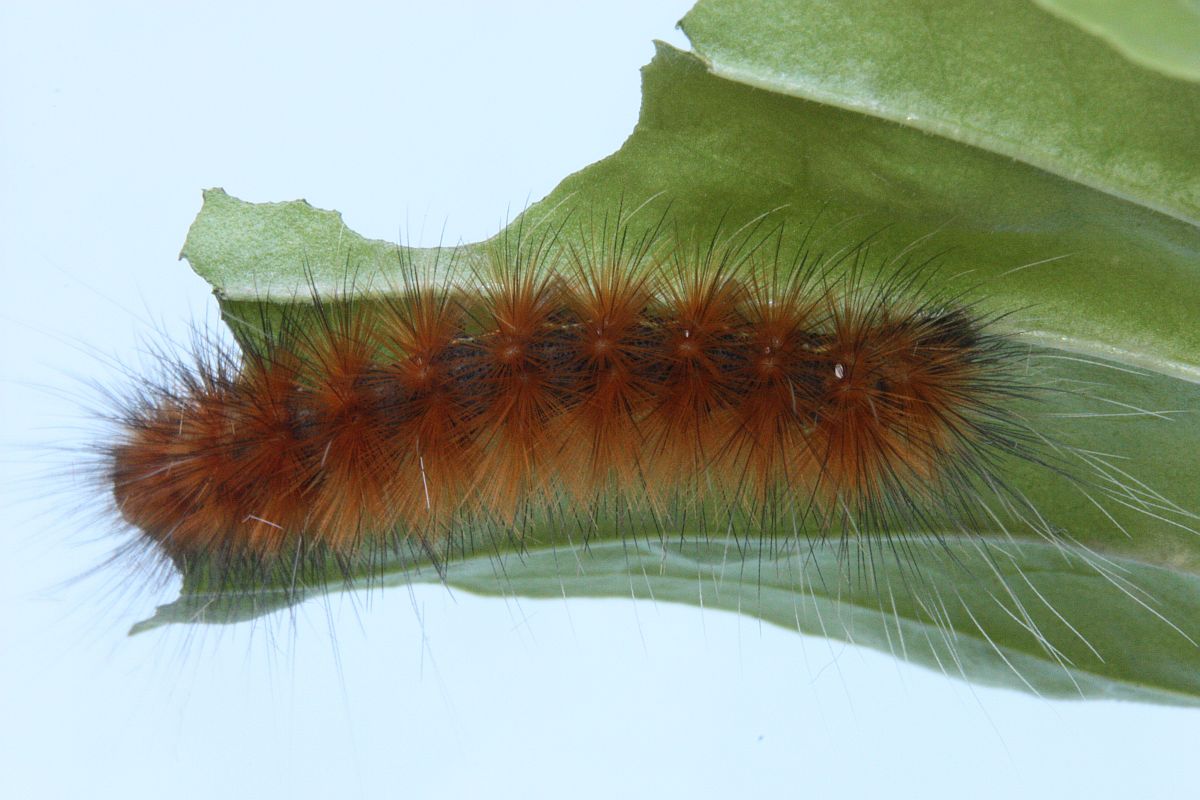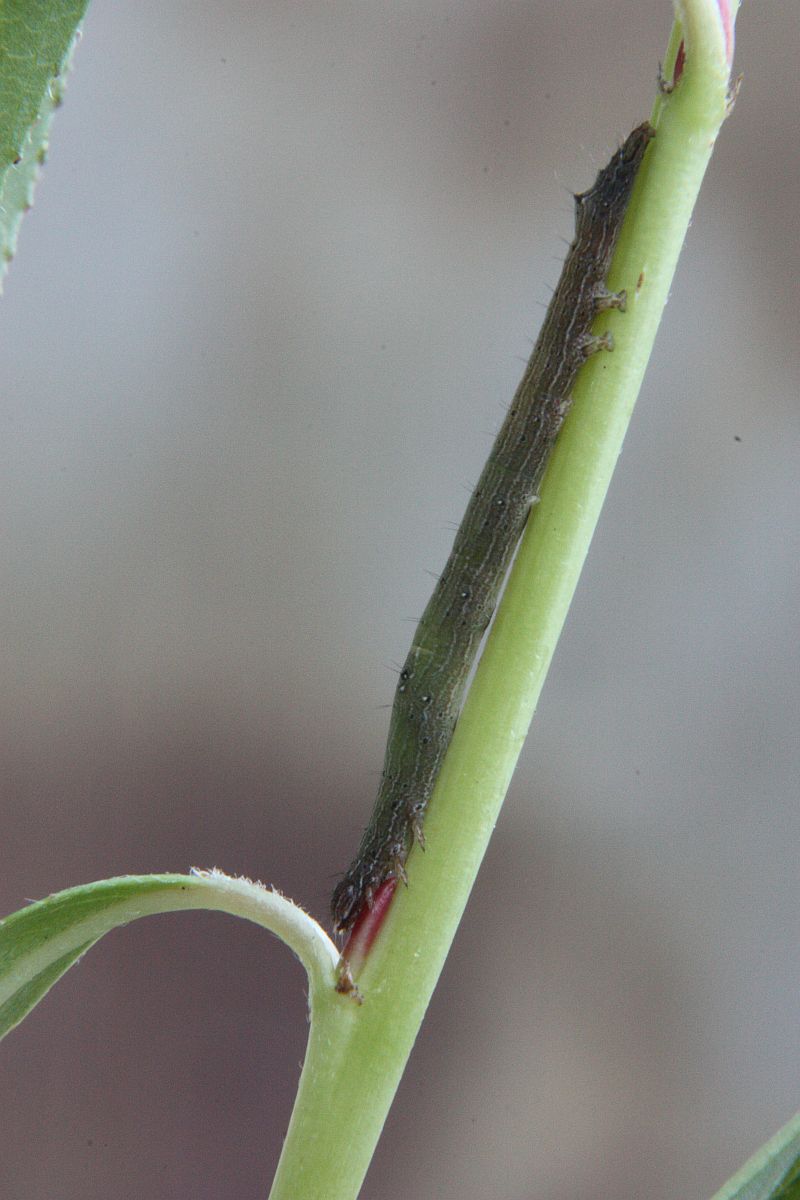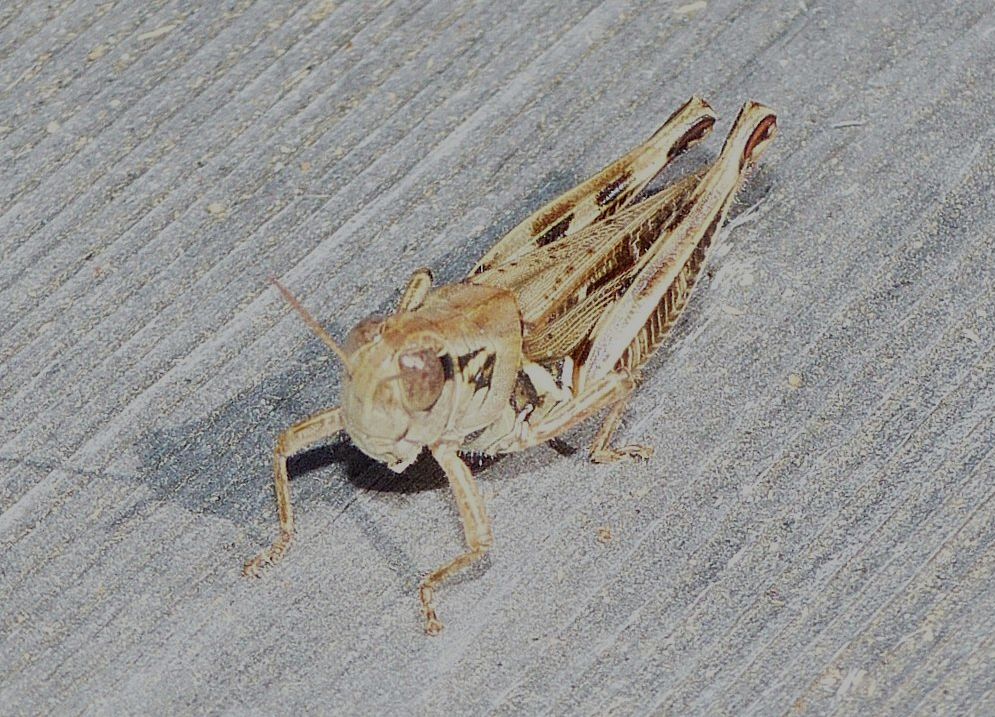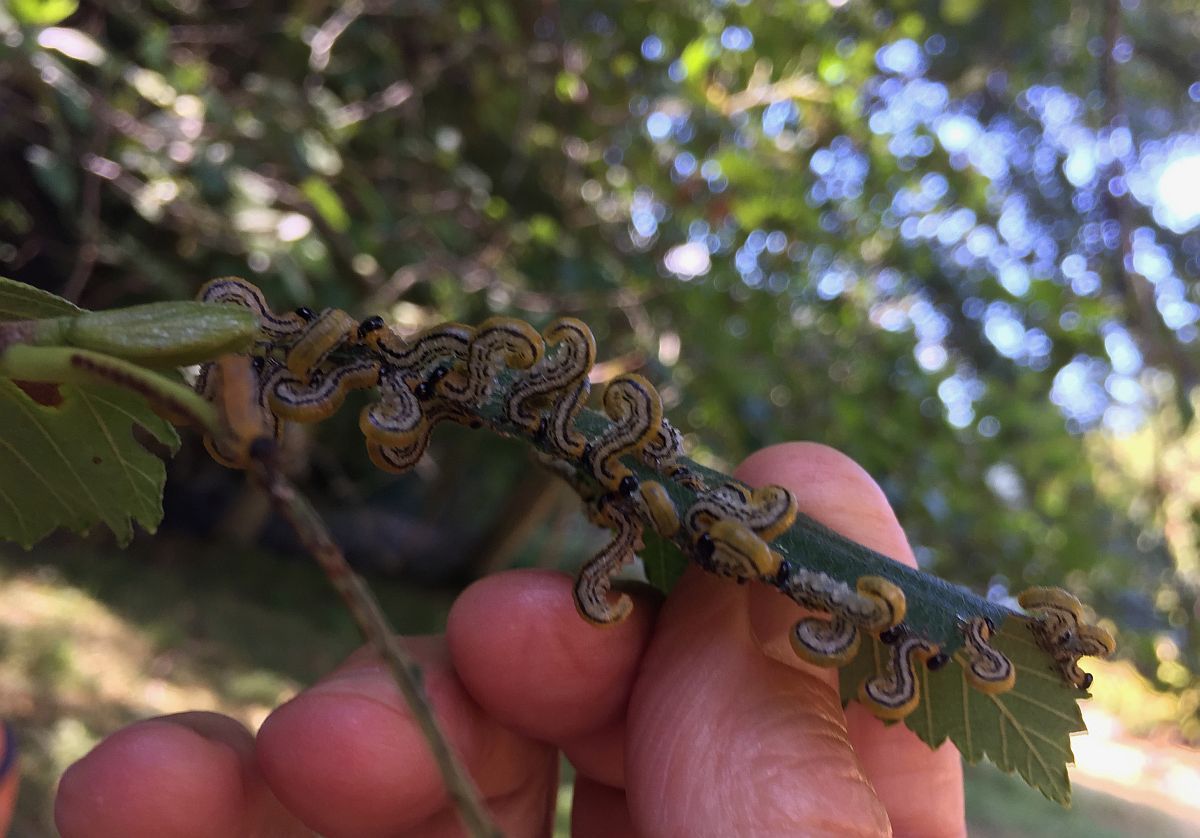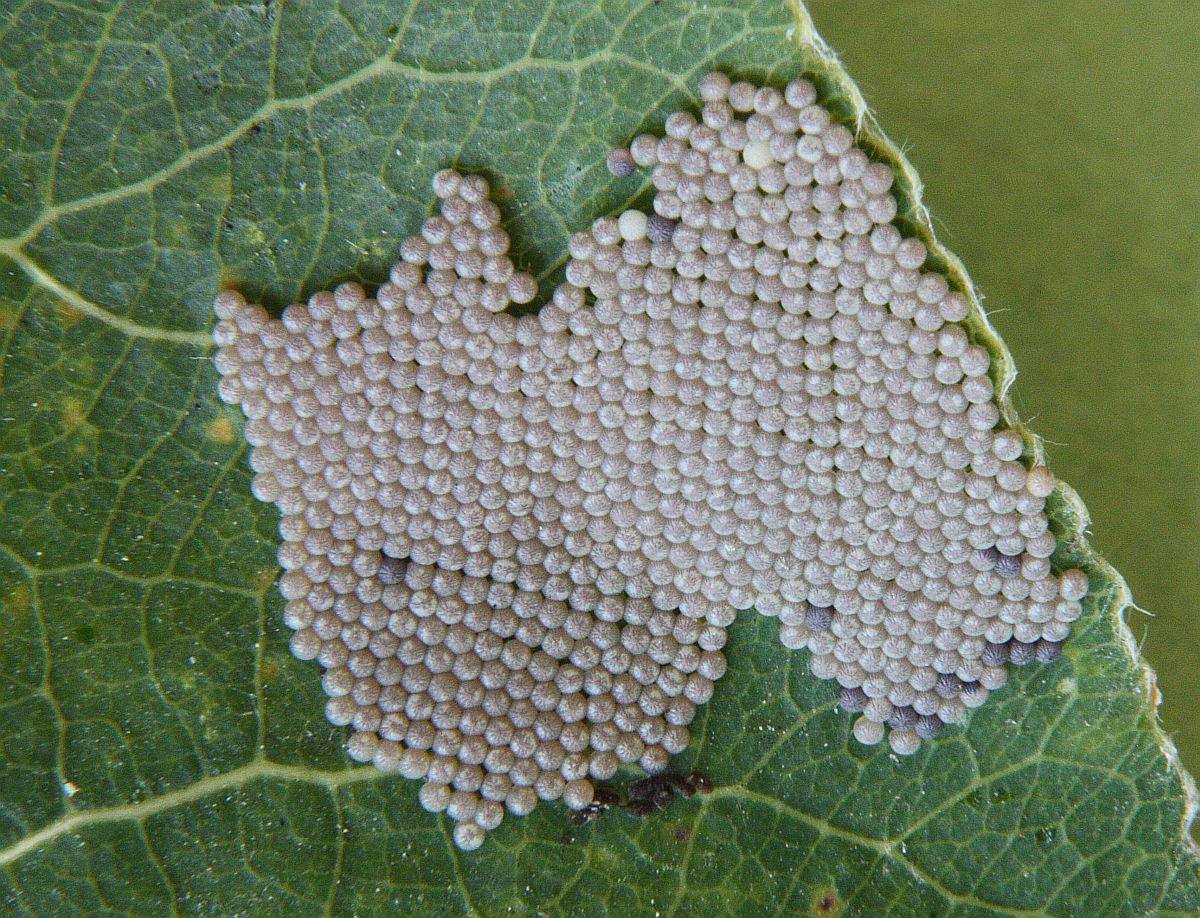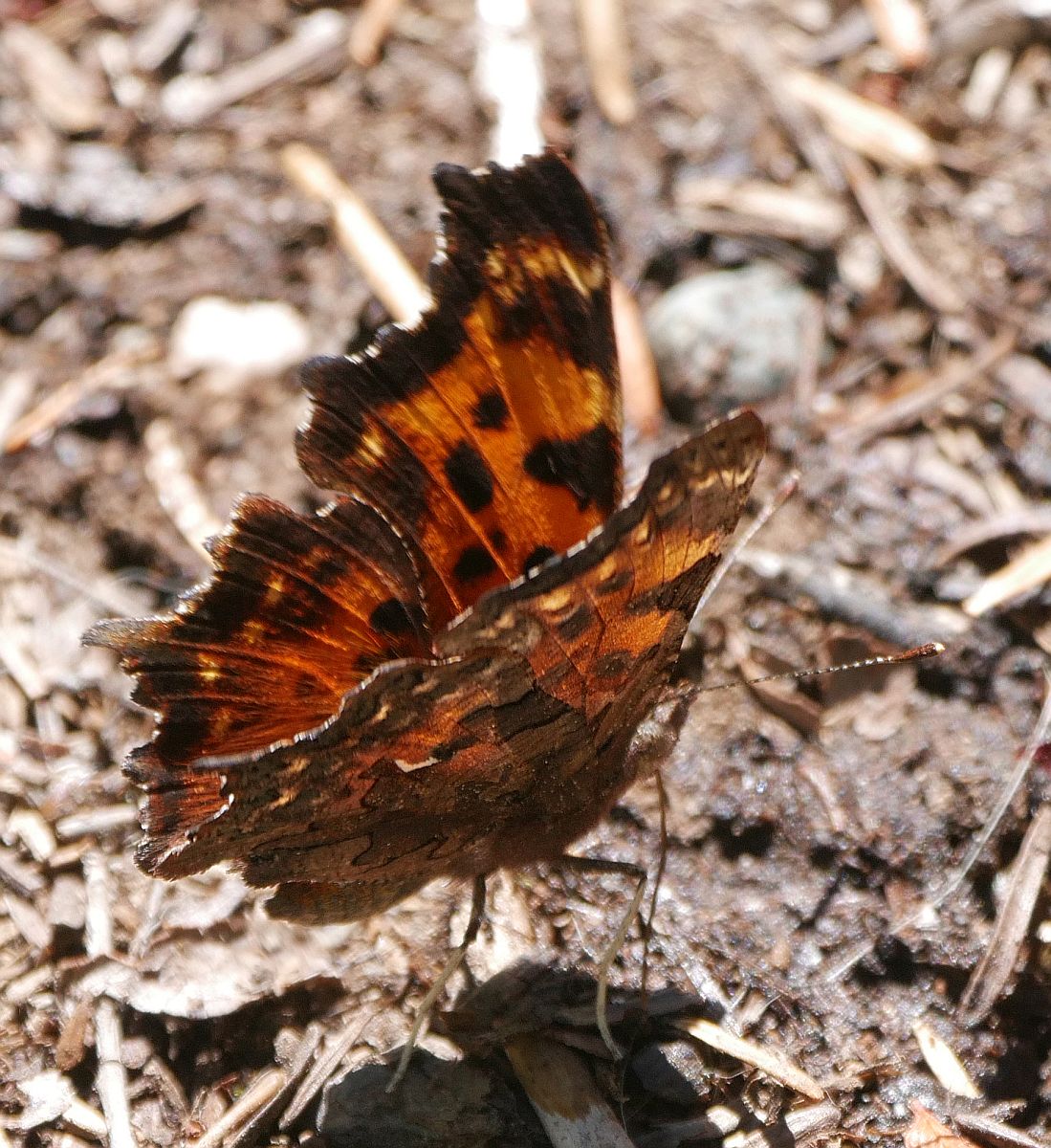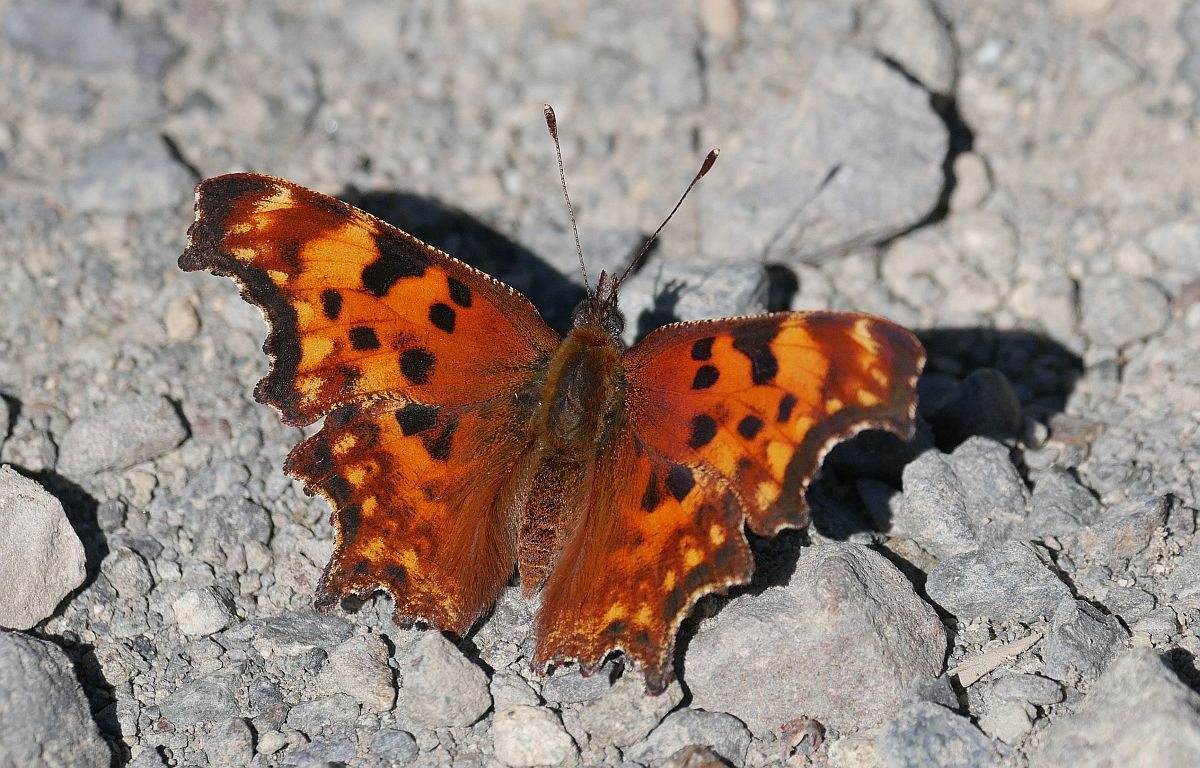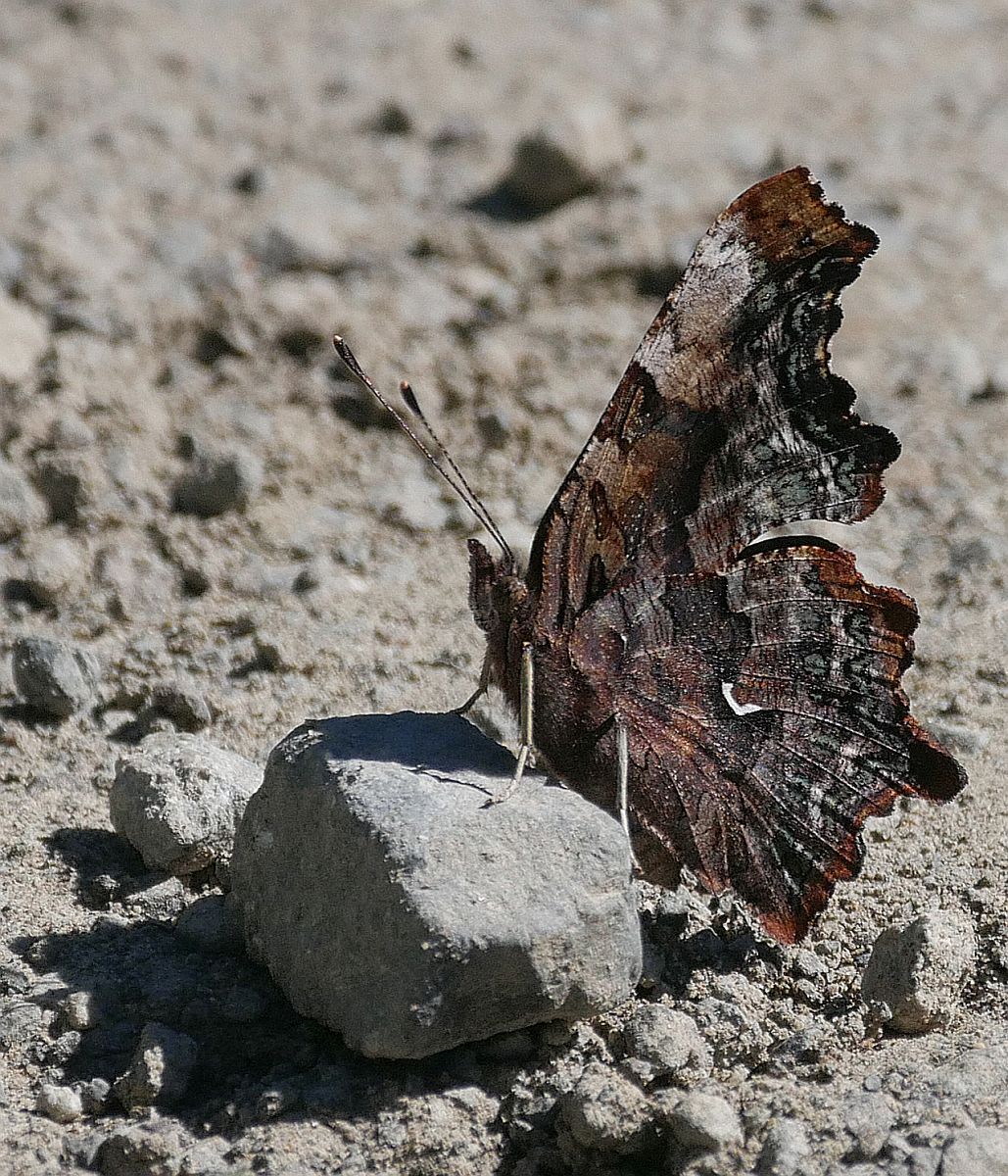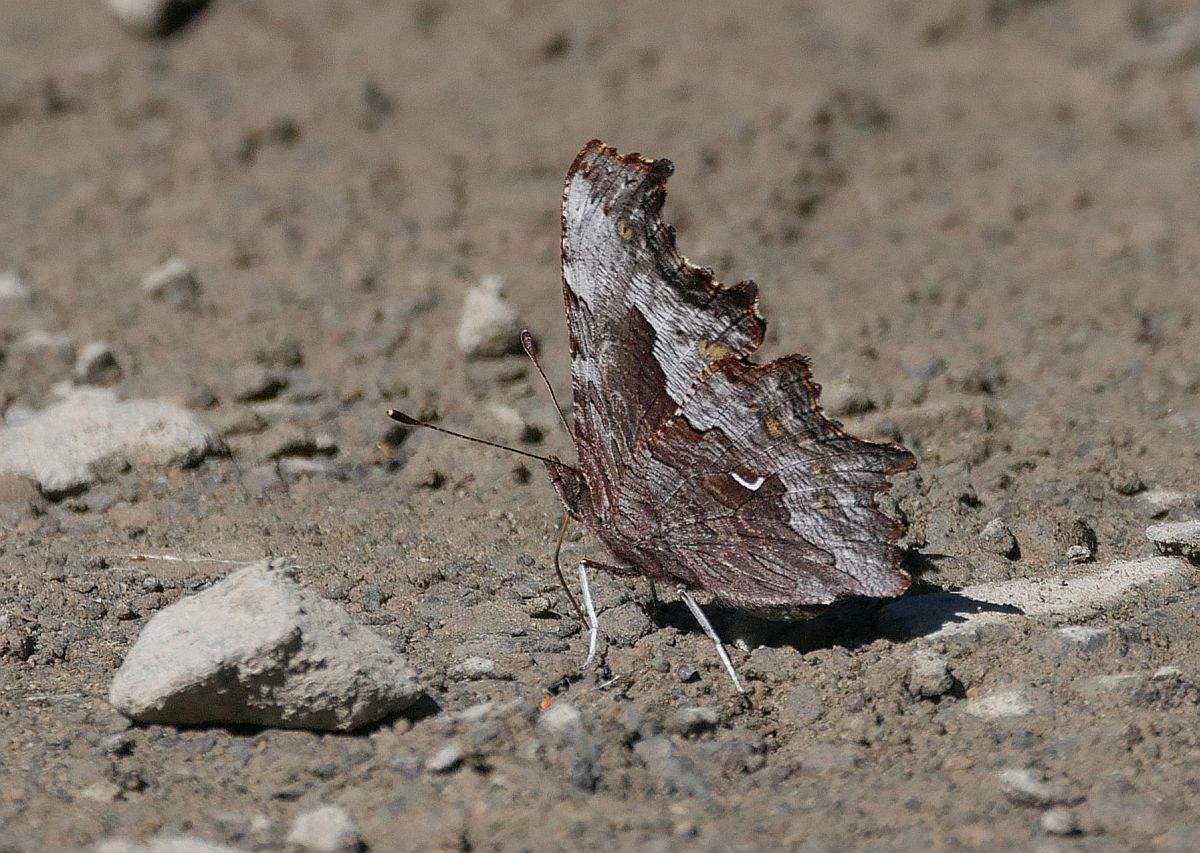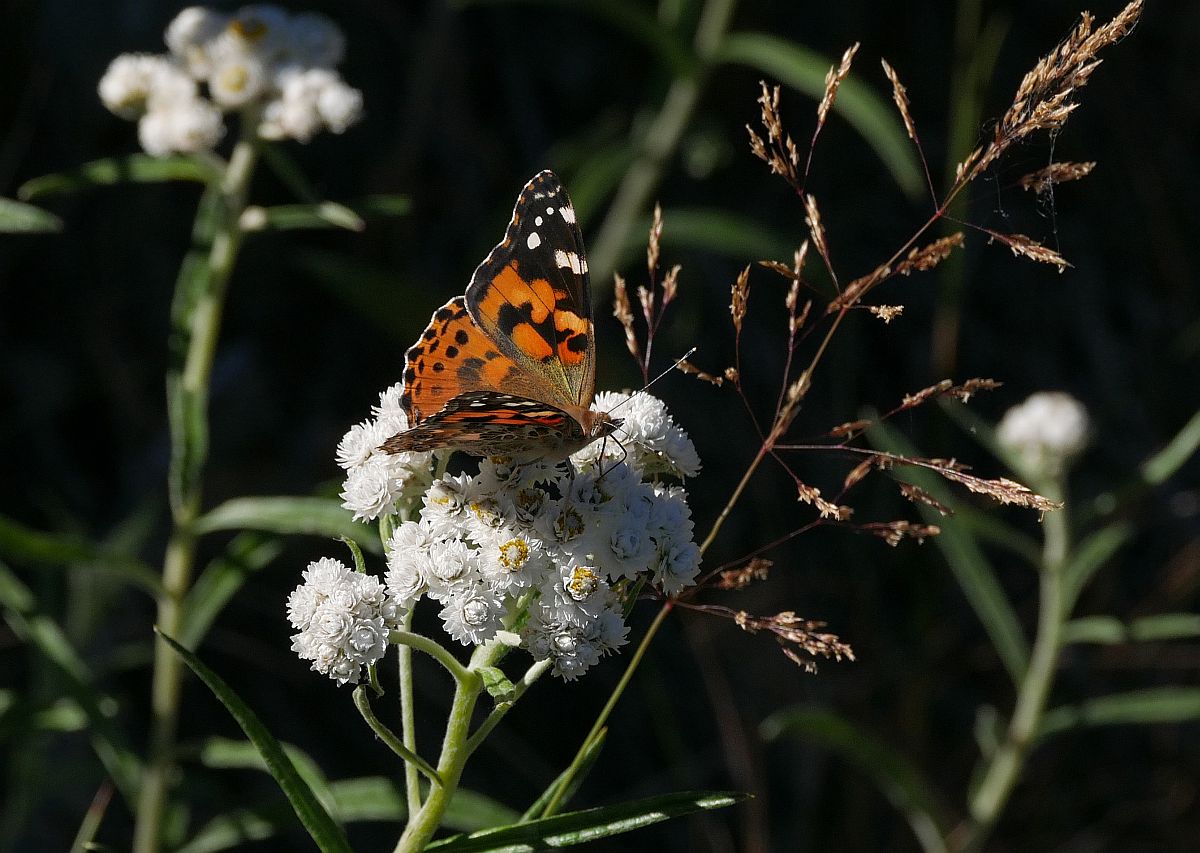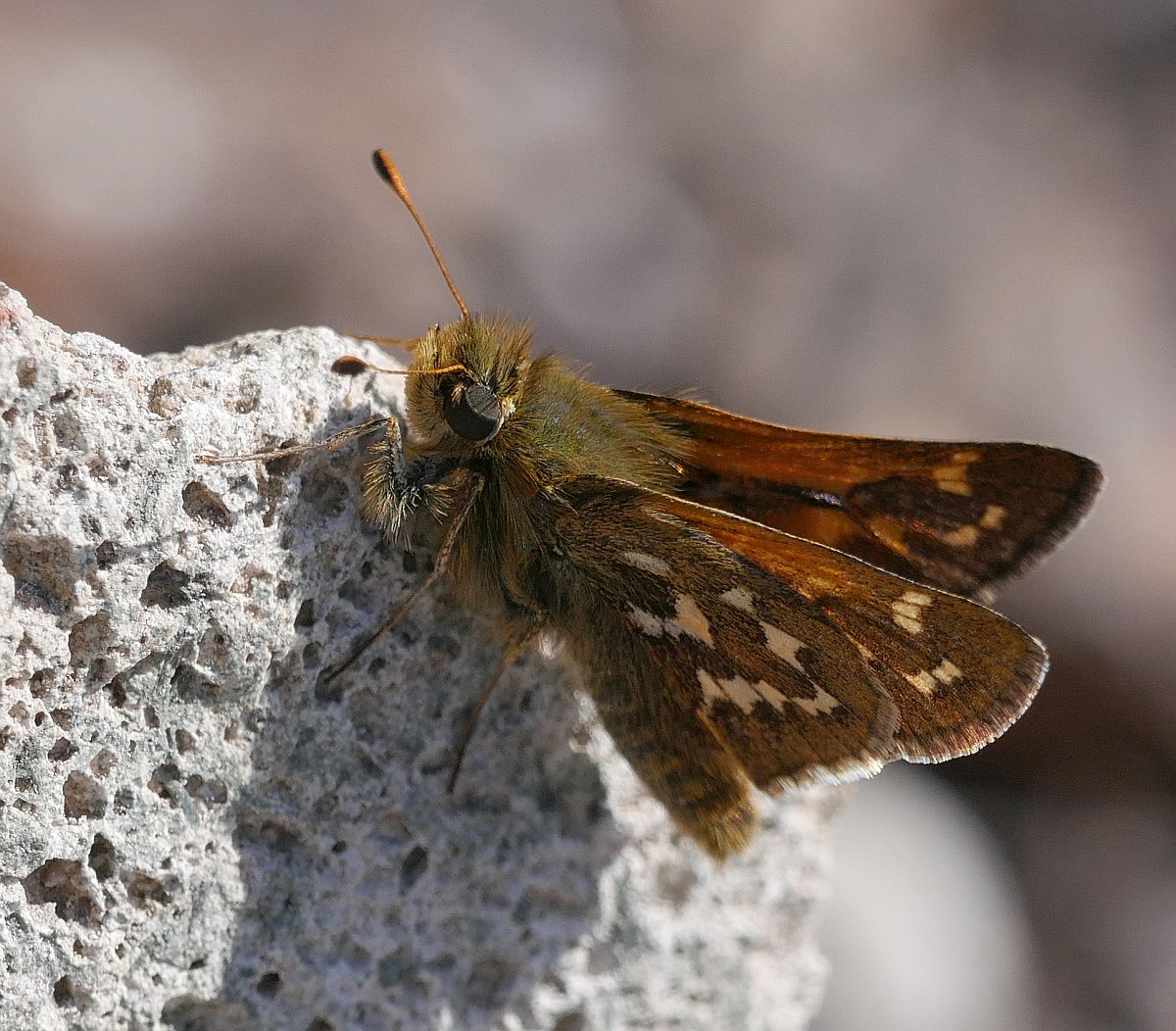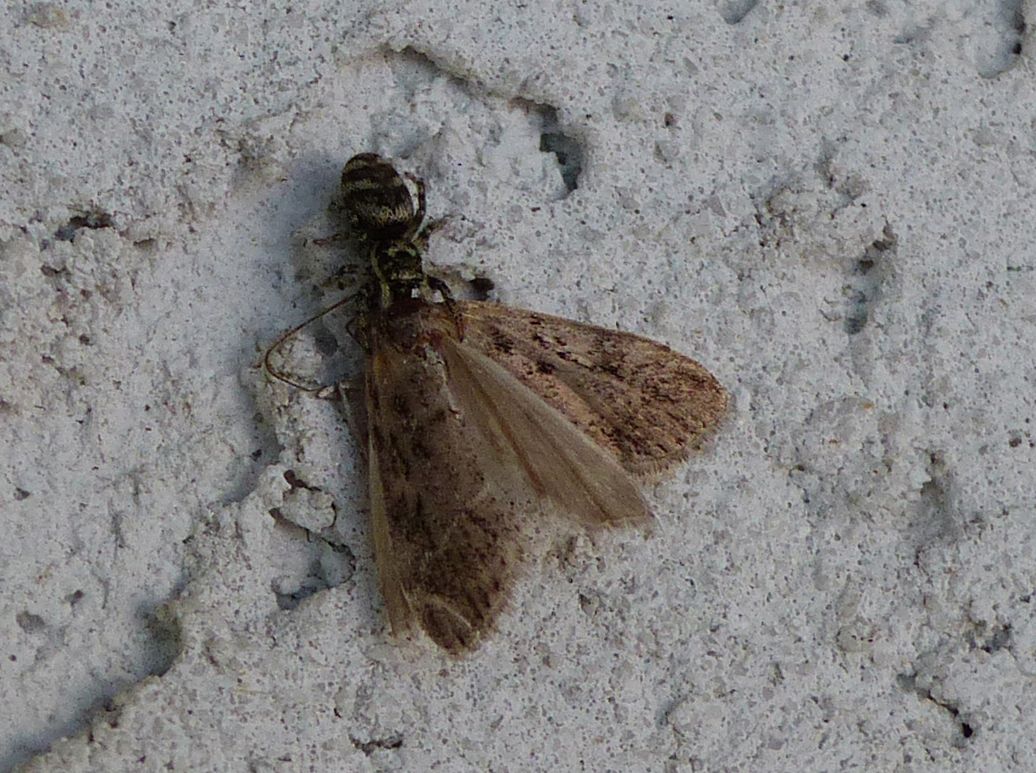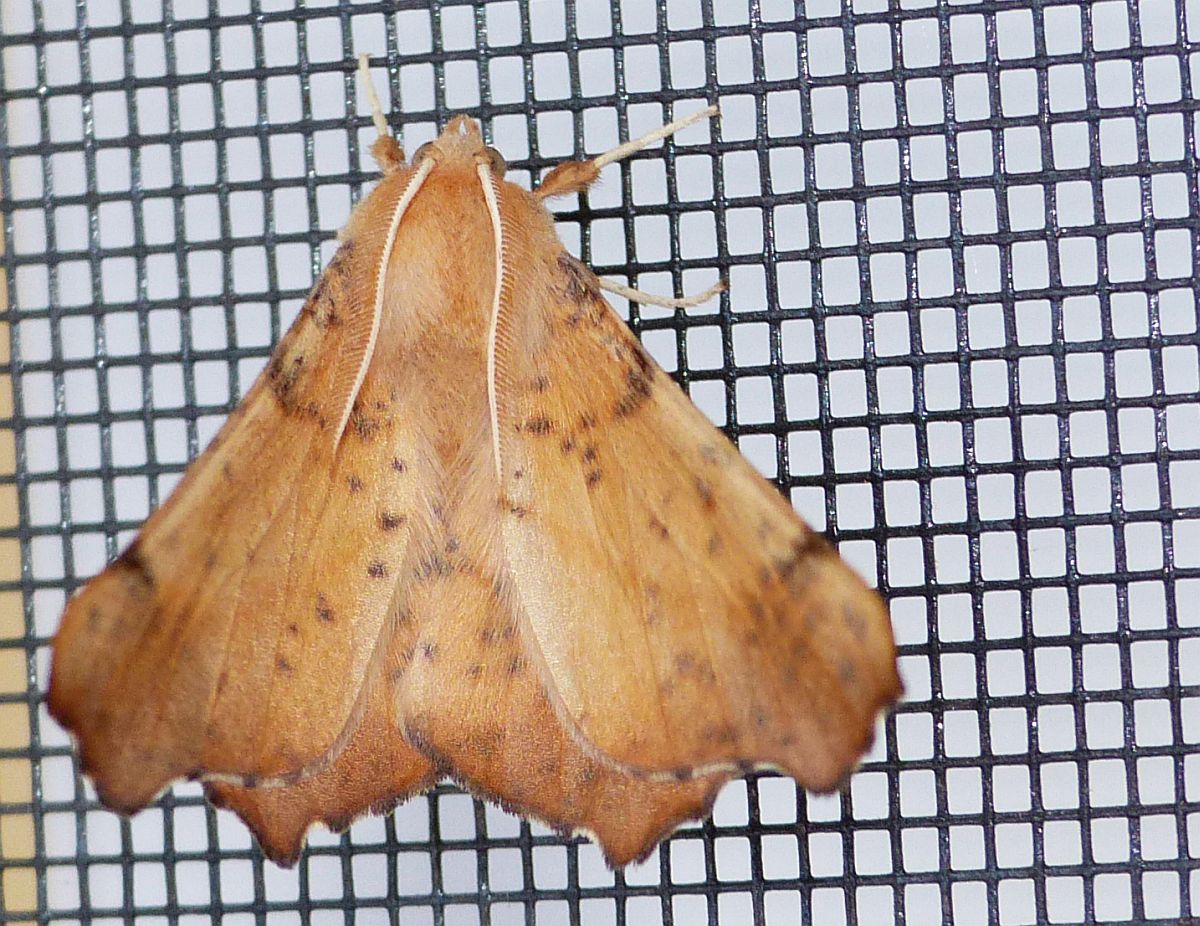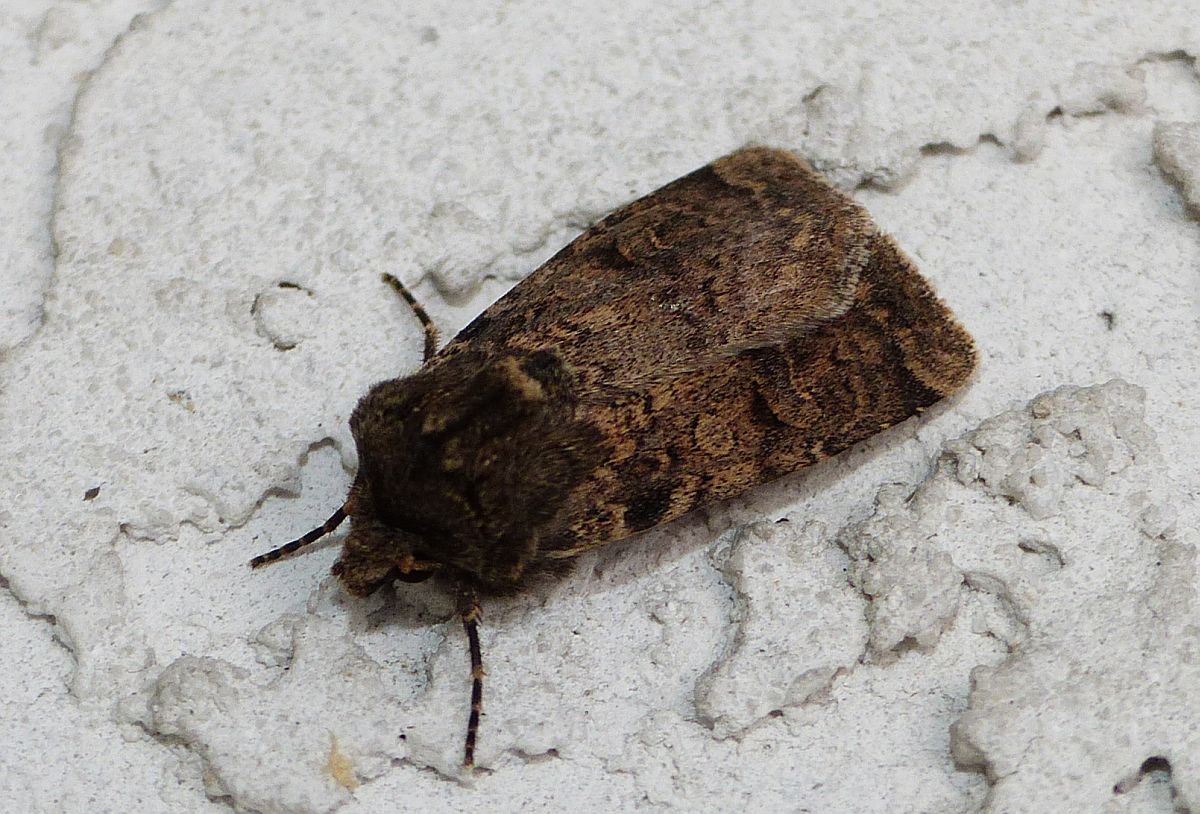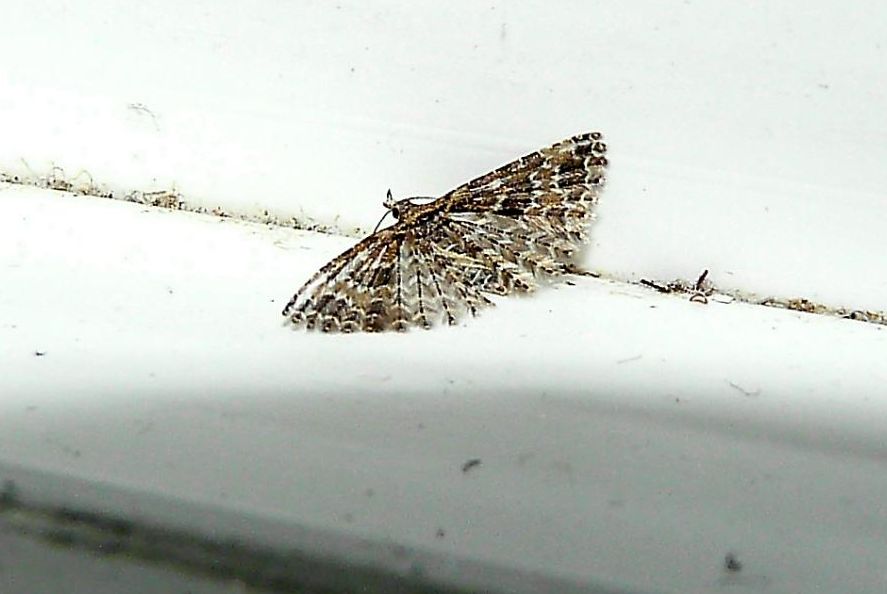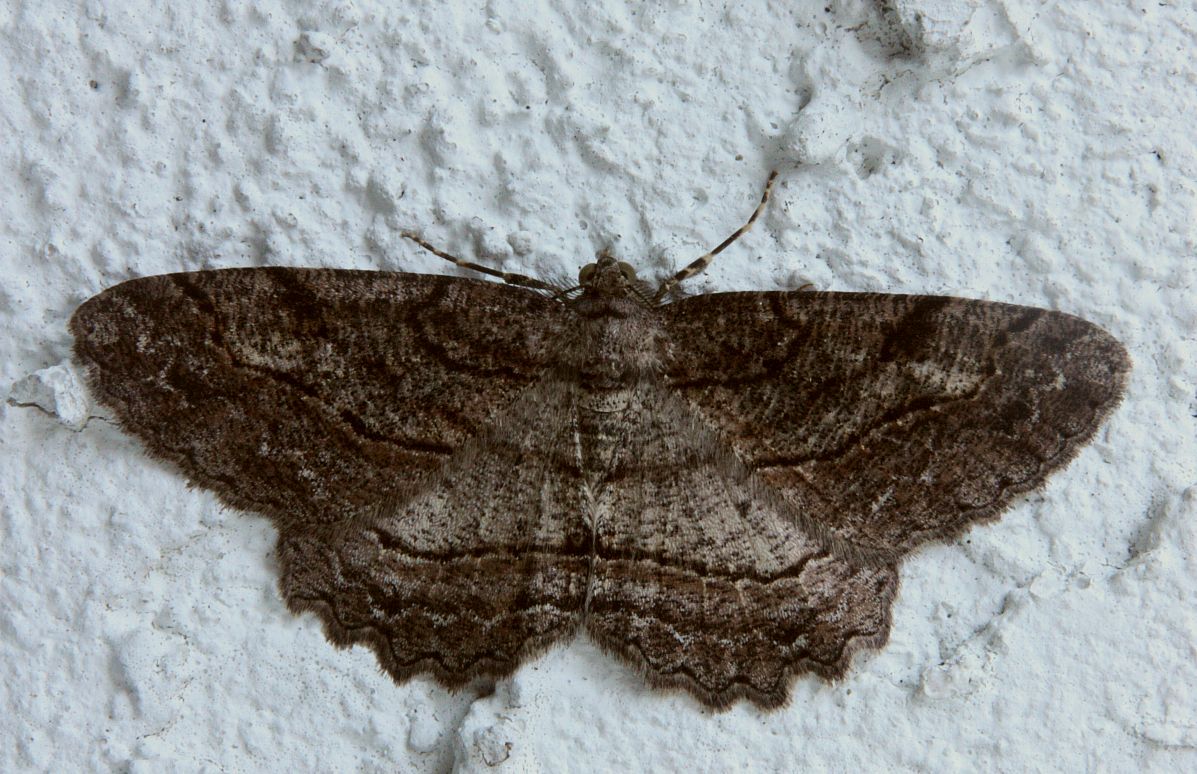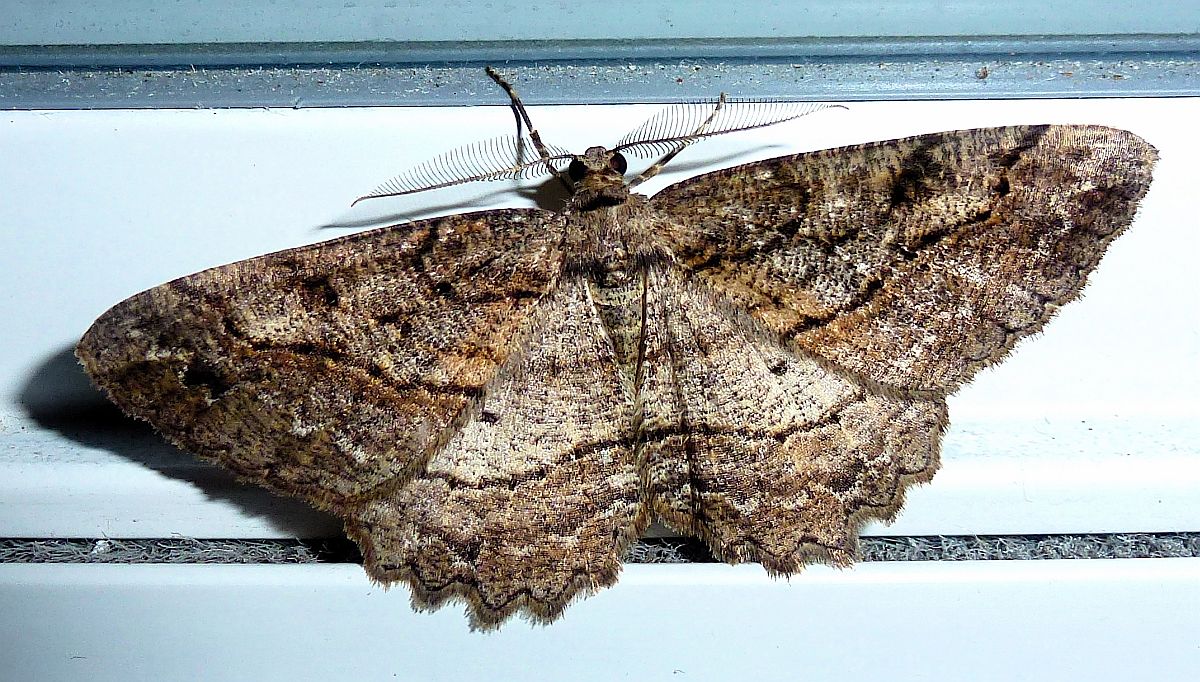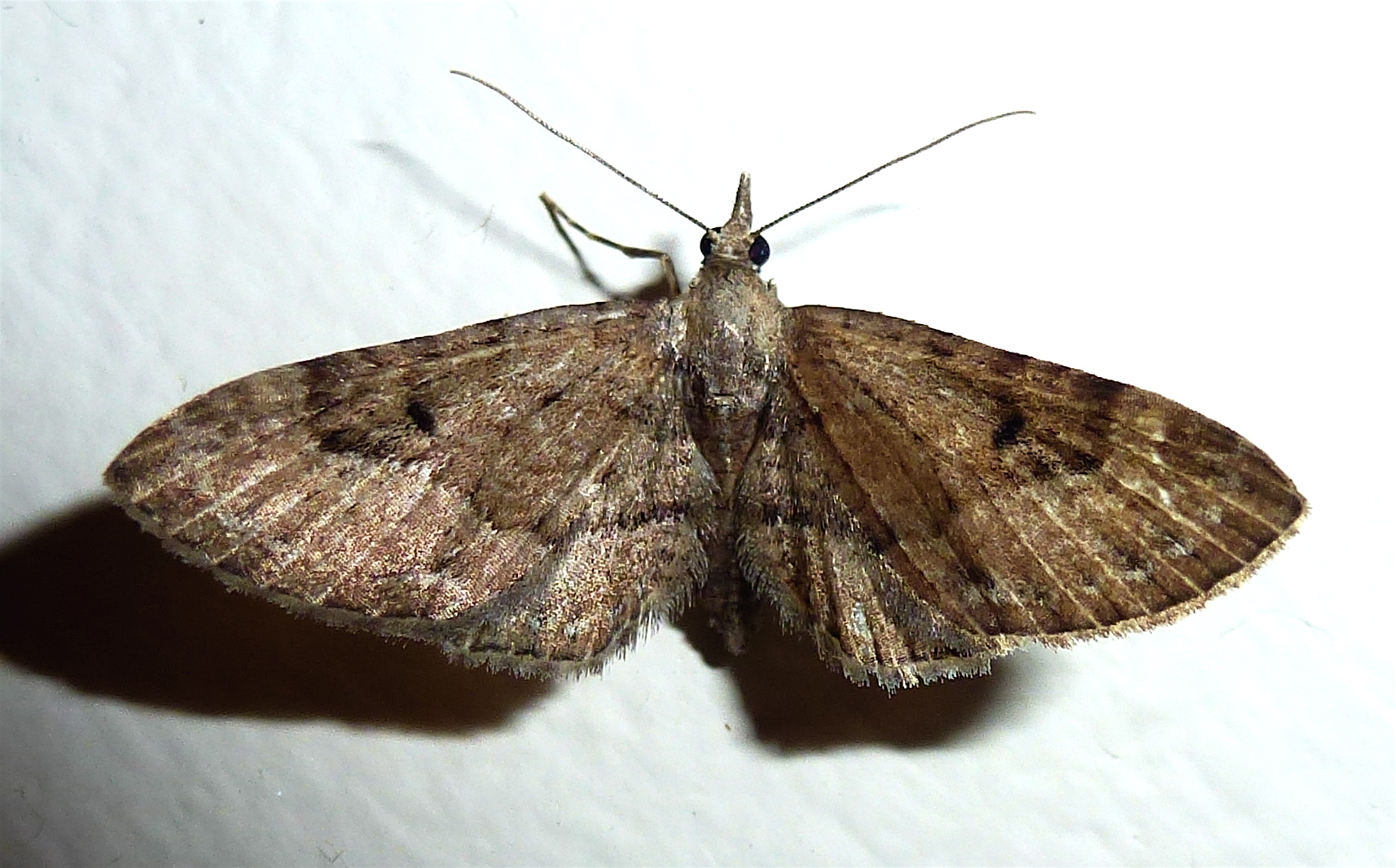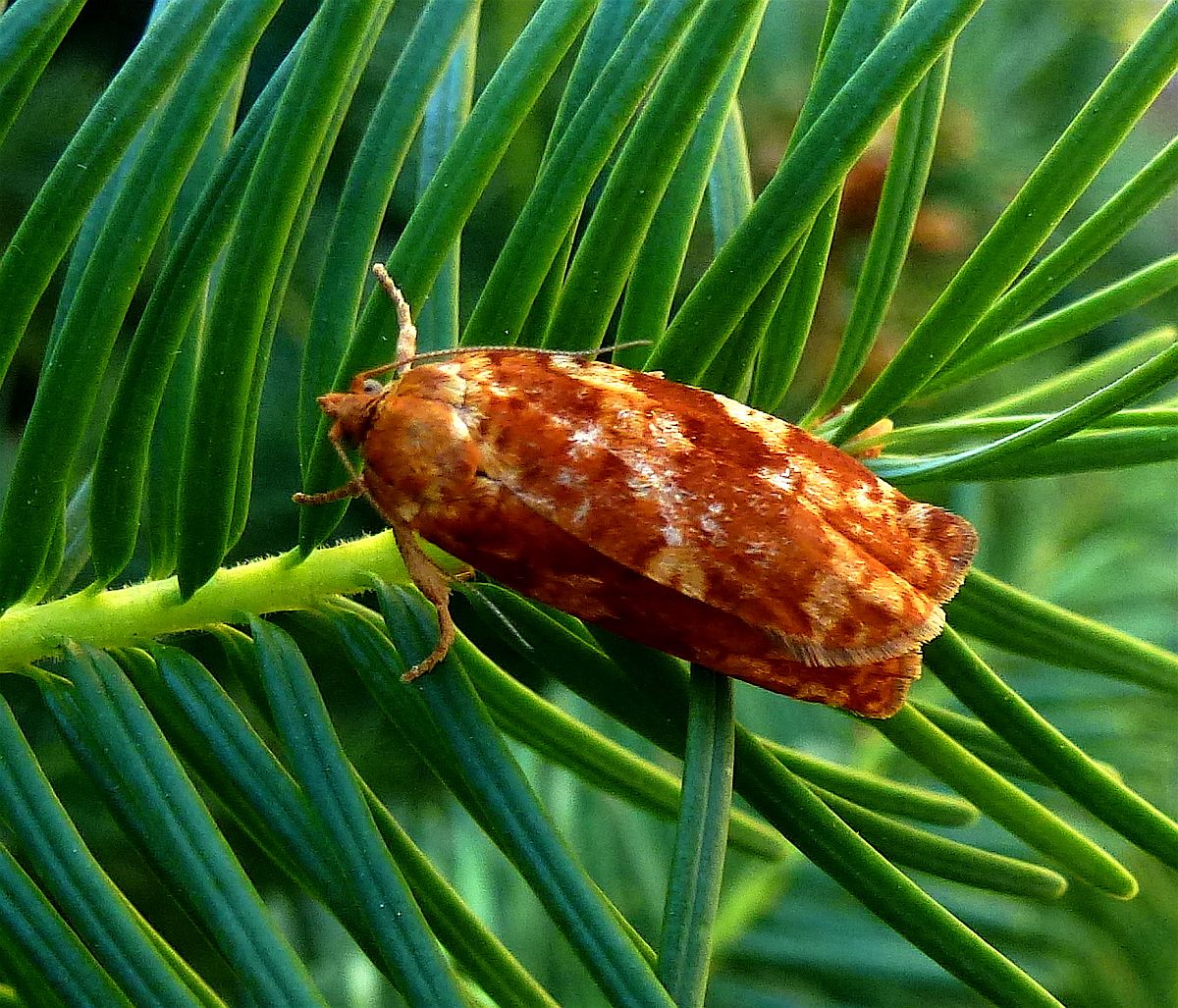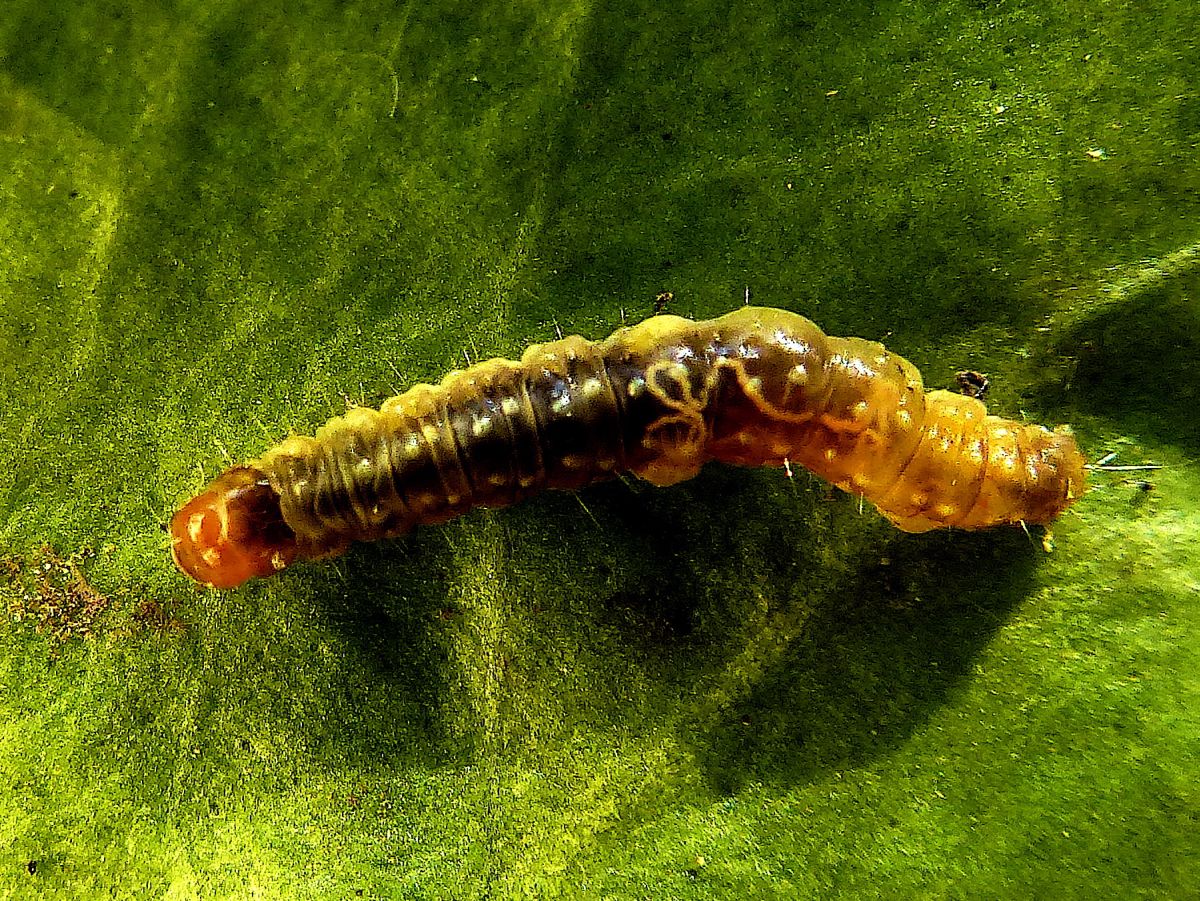2017 August 30
Jochen Moehr writes from Metchosin: At the North-eastern end of Duke Road in Metchosin, across from the bus stop, there is a nice stand of Jewel Weed (Impatiens capensis) on one side of the road. It is a nice little micro eco system. Ants cultivate crowds of aphids on the stems, which again are feasted on by what looks like Asian Lady beetles Harmonia axyridis, their larvae, by wasps and even flies. I attach a few pictures taken there today, Tue. Aug. 29, 2017.

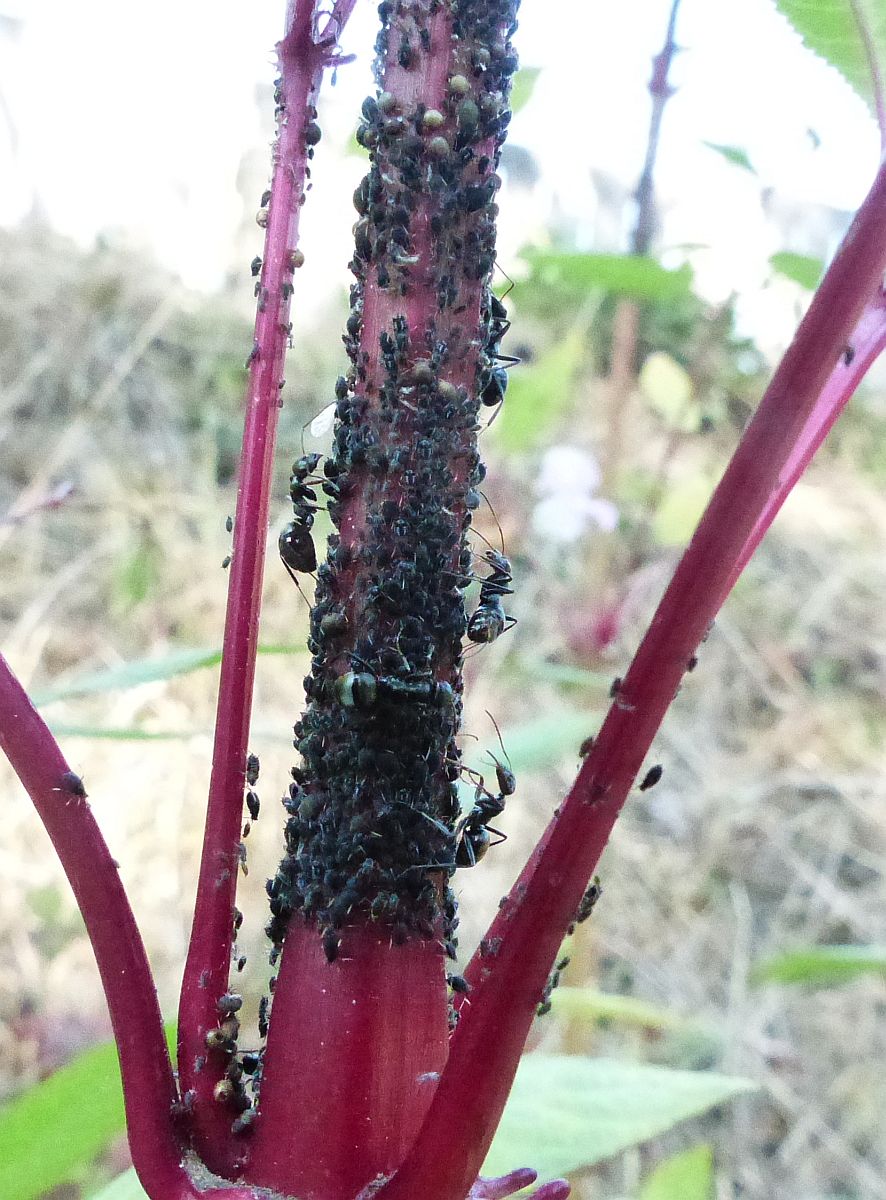
Aphids and ants Jochen Moehr


Aphids, a yellowjacket and a ladybird Jochen Moehr
The ladybird is Harmonia axyridis. The wasp is Vespula pensylvanica

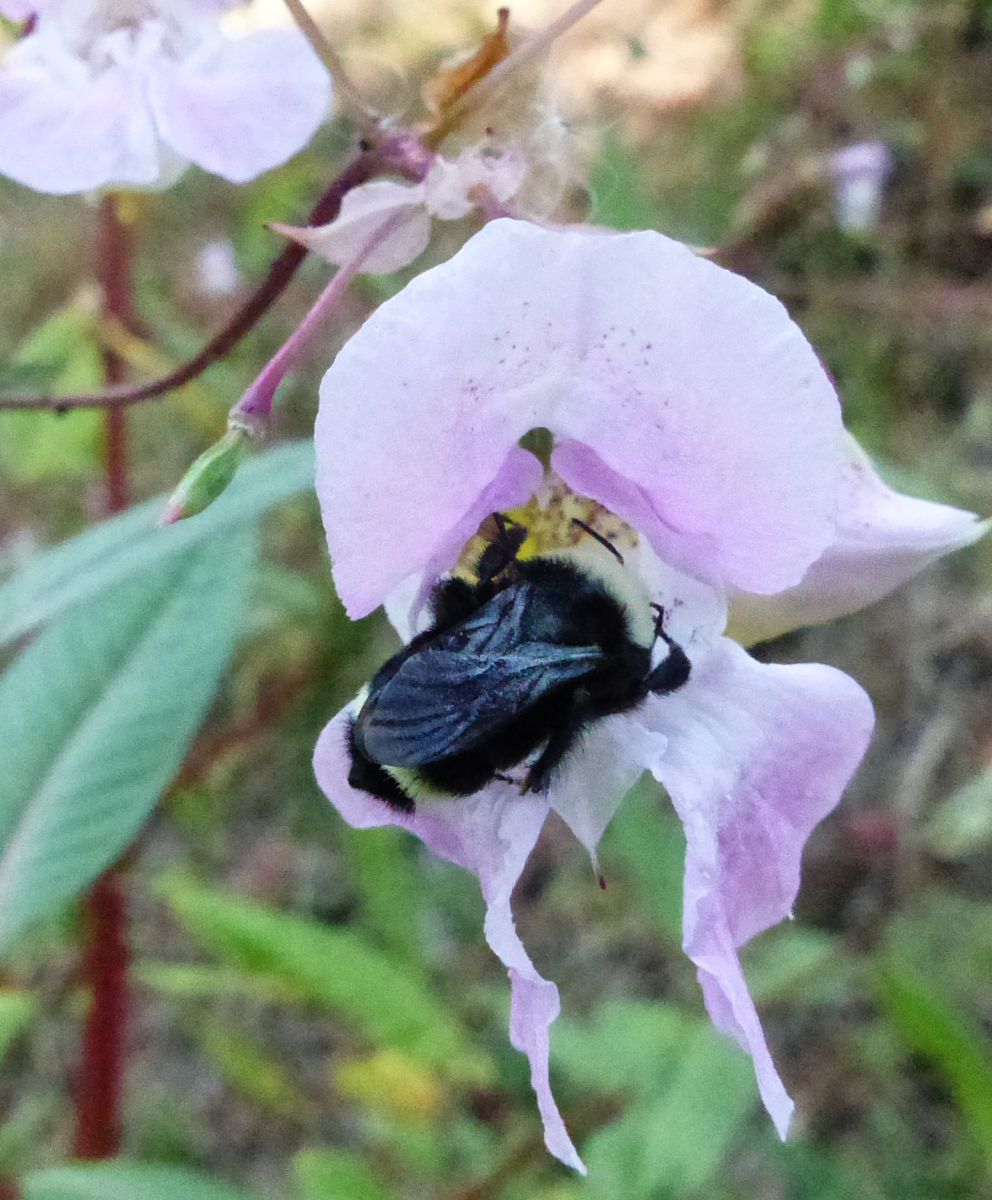
Bombus vosnesenskii (Hym.: Apidae) Jochen Moehr
We are grateful to Sean McCann for the identification of the wasp and the bee.

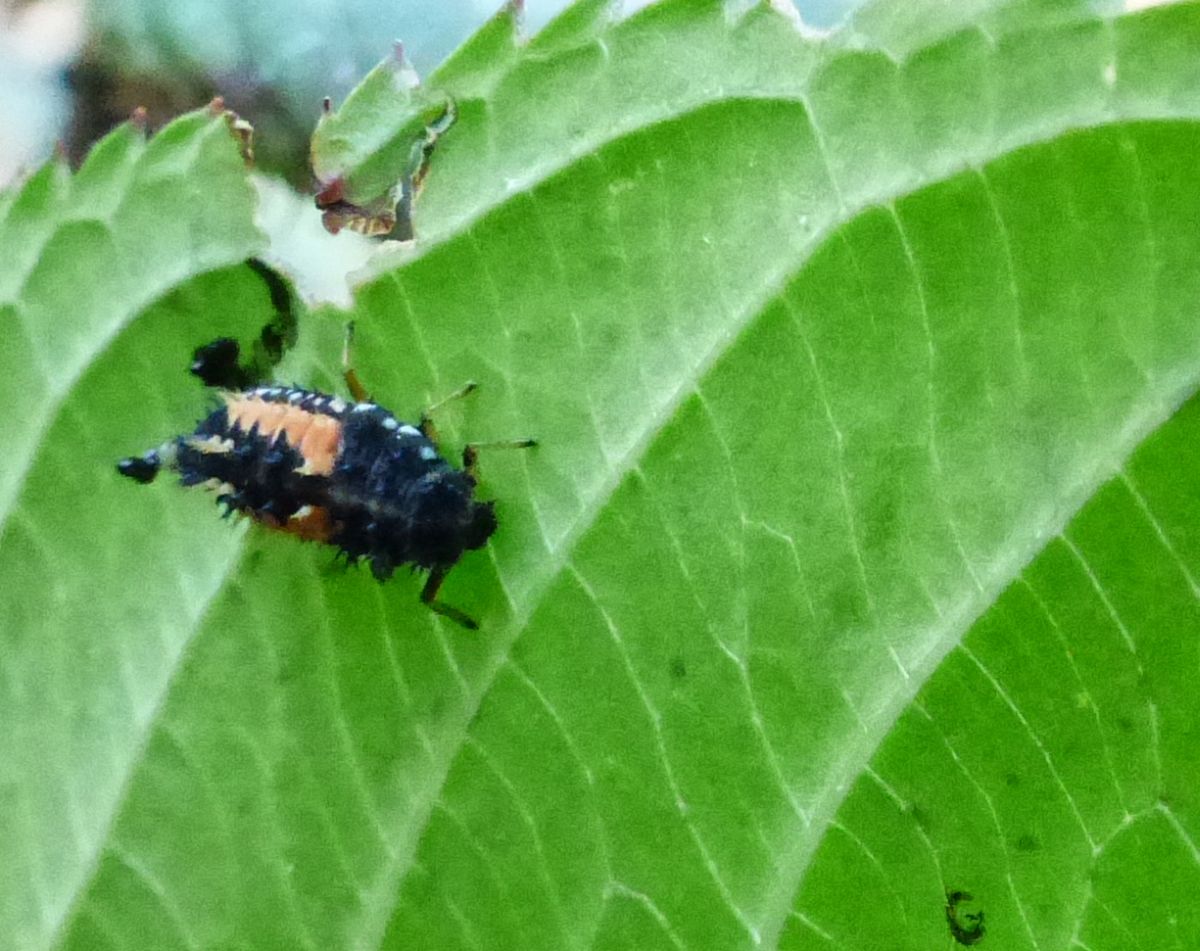
Ladybird larva (Col.: Coccinellidae) Jochen Moehr

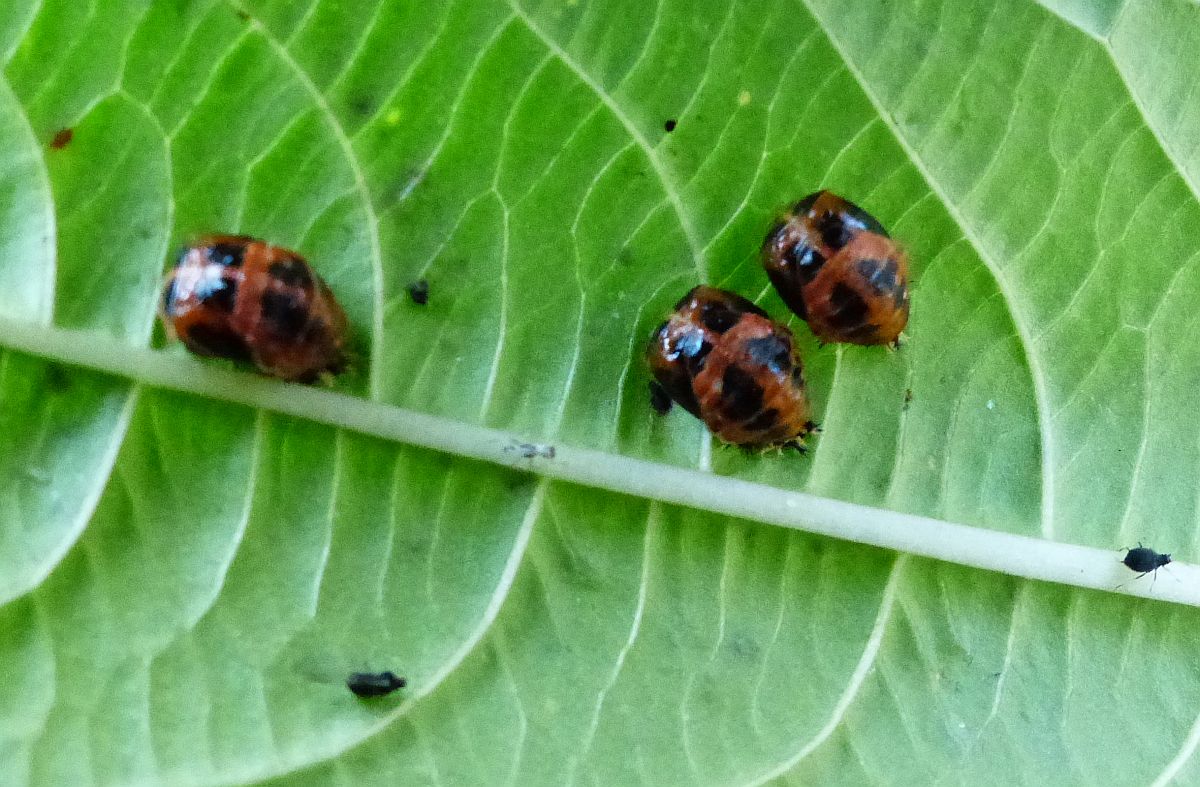
Ladybird pupae (Col.: Coccinellidae) Jochen Moehr

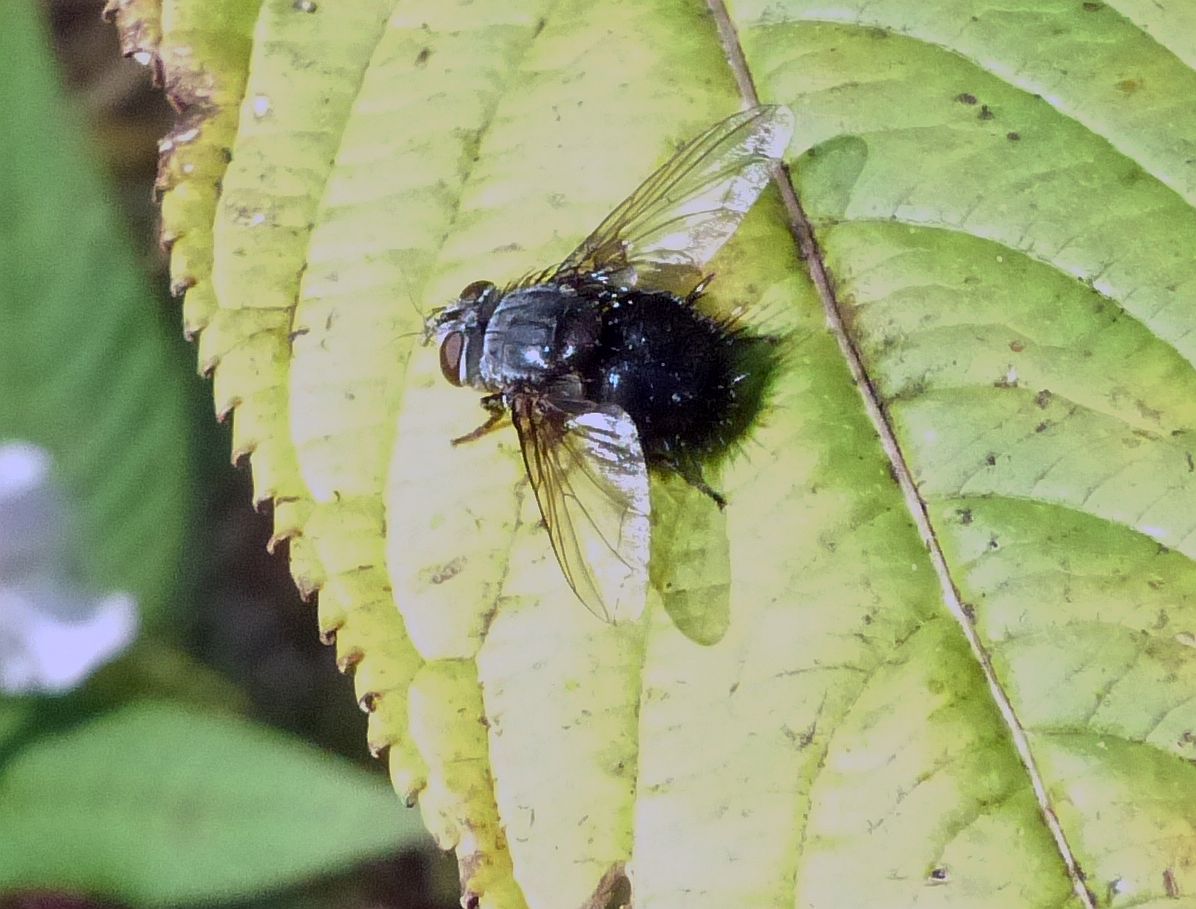
Fly (Dip.: Tachinidae) Jochen Moehr
Jeremy Tatum writes: The slender unknown caterpillar that I showed on August 24 and 28 is now a little larger and it has turned out to be a species of Zale.

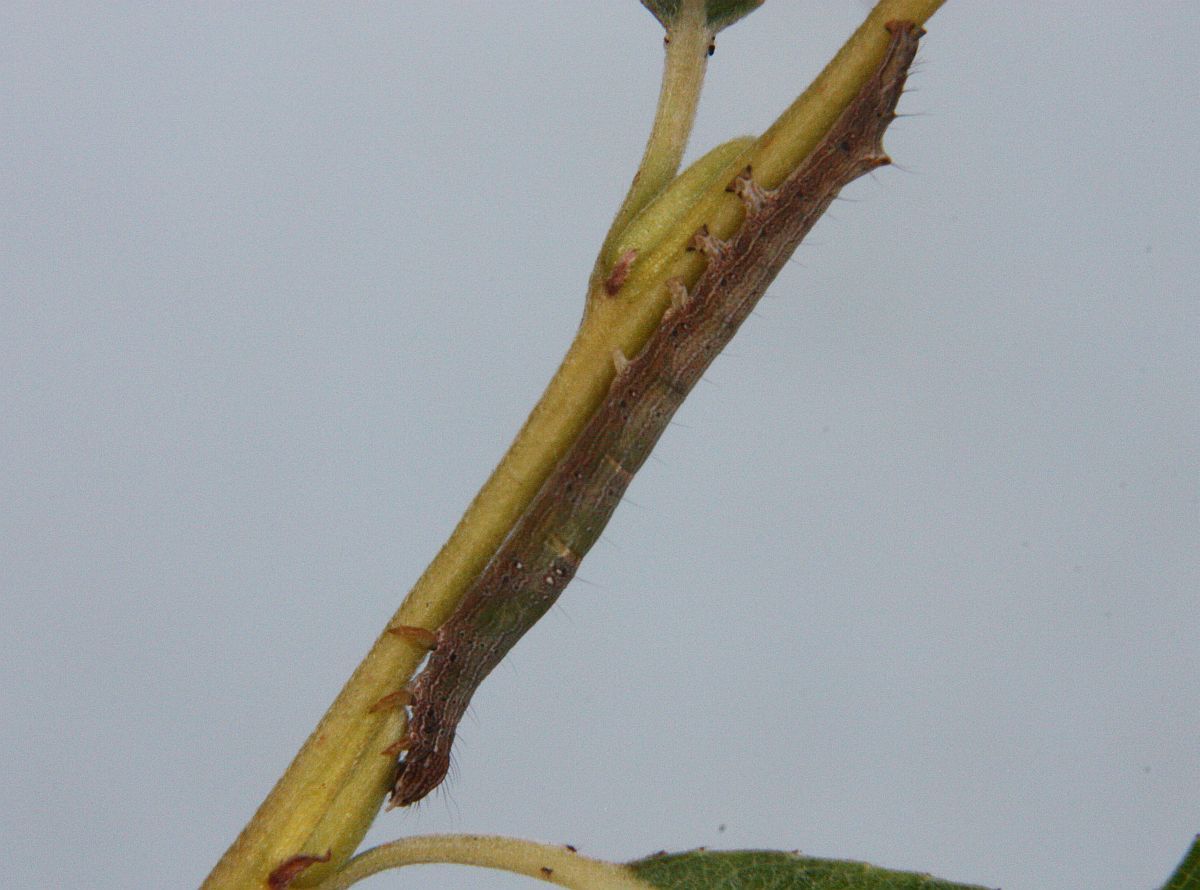
Zale sp.: (Lep.: Erebidae – Erebinae) Jeremy Tatum
Jeremy Tatum writes: On August 28 I showed a photograph of a batch of 596 ova of a Large Yellow Underwing moth from an Aspen leaf in Bow Park. Today in a nearby Red Oak tree just a few yards away I found two more batches. They were on adjacent leaves on the same twig, inches from each other. On the other hand the two batches of eggs are different colours. I leave the reader to speculate as to whether the two batches were laid by the some individual moth, or by two separate individuals. It is interesting that, although the caterpillars of pronuba usually feed on low-growing herbs, the ova ore often (not invariably) laid on the leaf of a tree, allowing the newly-hatched larvae to drop down into the vegetation below.

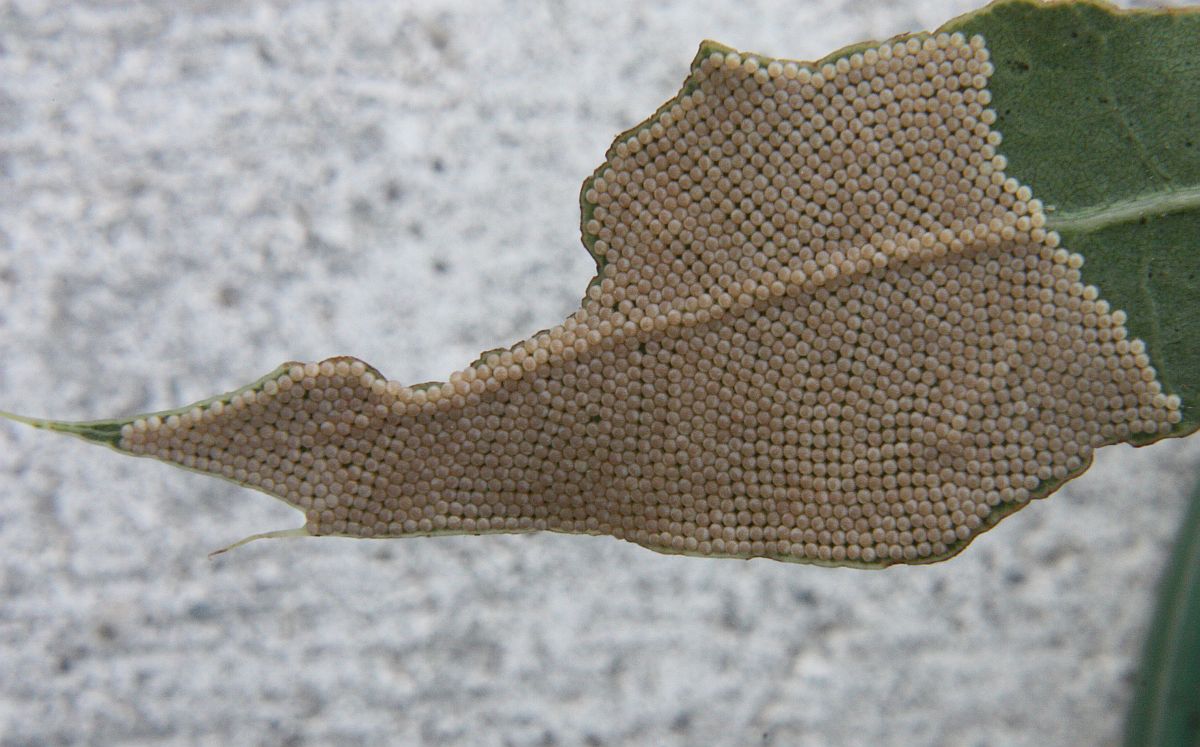
1513 ova of a Large Yellow Underwing Noctua pronuba (Lep.: Noctuidae)
Jeremy Tatum

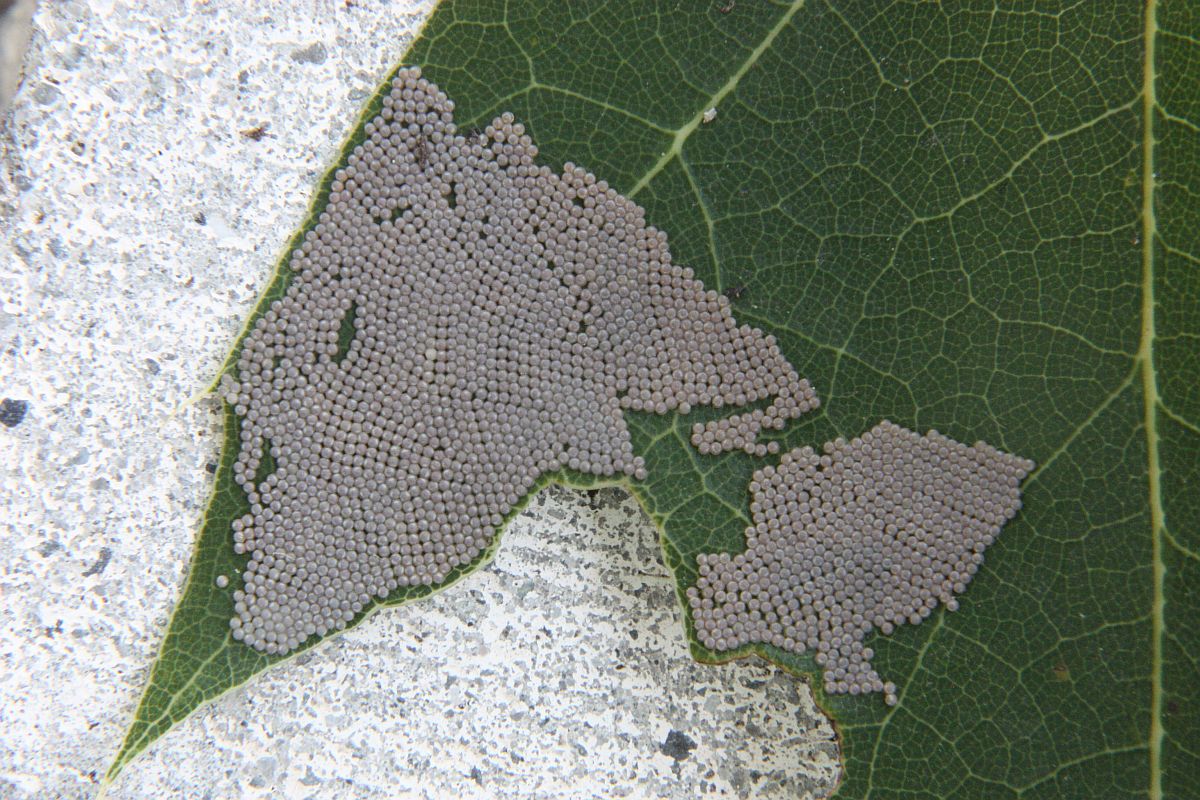
1923 ova of a Large Yellow Underwing Noctua pronuba (Lep.: Noctuidae)
Jeremy Tatum
There’s more in the queue, but that’ll have to do for today.

